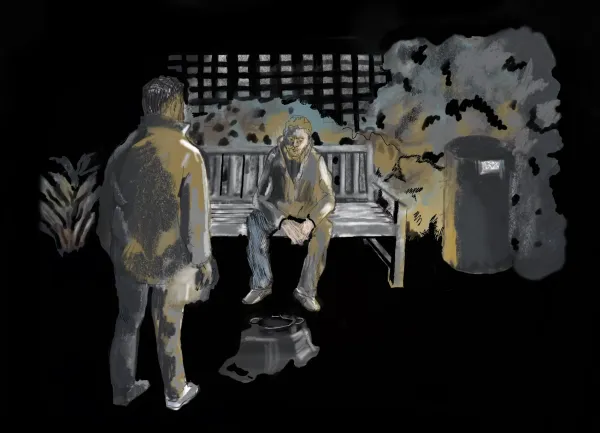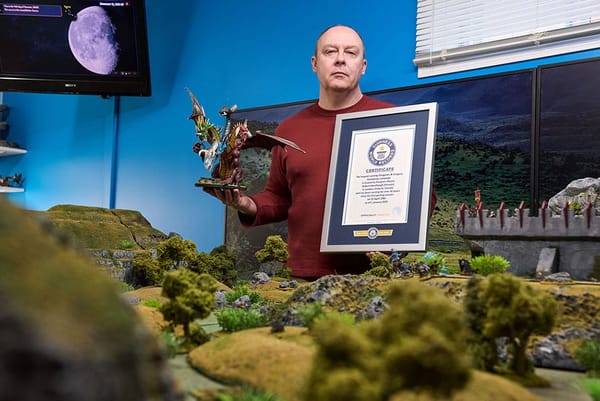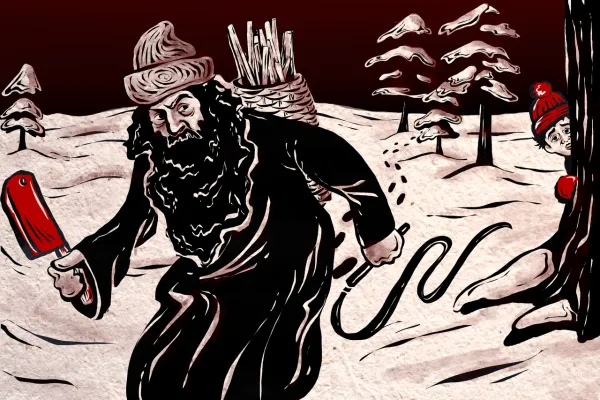This Black man was a Spanish conquistador in the 1500s
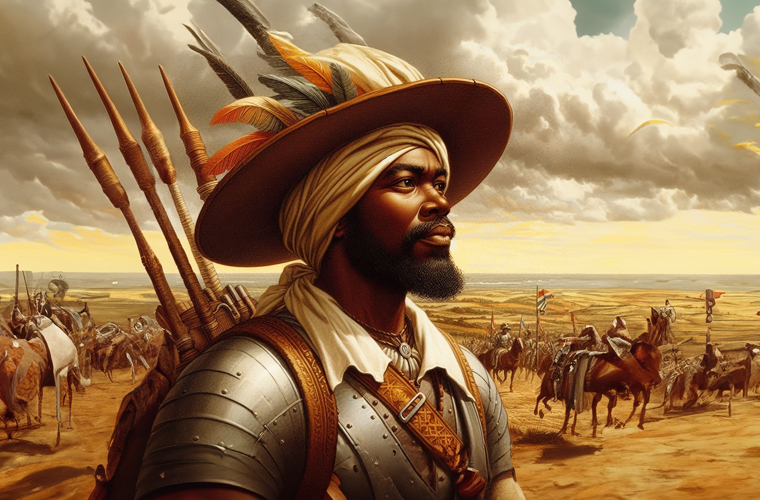
From History Workshop: "Africans crossed the Atlantic alongside the earliest Europeans, some trafficked in bondage, others navigating precarious forms of freedom. Yet recent scholarship, particularly since the turn of the century, is starting to give voice to the many Africans who have not been studied or considered important historical actors, erased by both colonial records and modern prejudice. Black conquistadors appear in various ship logs, retellings of expeditions, and even in some of the most famous Indigenous testimonies of the conquest – the Nahua codices. Juan Garrido was a firsthand witness to many critical events during the expansion of the Spanish Empire. But the document which makes Garrido so unique is his probanza, used to petition rewards from the king for service to the crown. This outstanding piece of evidence provides an insight into the life of a Black subject of the Spanish Empire."
How a dead cat led to the Blue Angels aerobatic fighter-jet team getting quieter

From Substack: "This is the story of a heart-wrenching emotional loss needlessly compounded by unapologetic Constitutional violations. When a beloved family member was terrorized by the United States Navy’s Blue Angels, an American citizen exercised her Constitutional right to criticize her government’s role in her daughter’s suffering. In response, a cadre of emotionally fragile snowflakes masquerading as naval officers chose the coward’s path: they silenced this citizen’s speech, violated their oath to the Constitution, and brought disgrace upon the uniform they claim to honor. A year later, when that same vulnerable creature died after enduring yet another sonic assault during her final days on Earth, the Navy’s Constitutional betrayal compounded the tragedy — an American remained silenced, unable to voice her grief or otherwise hold her government accountable for its role in her family’s suffering."
What it's like hunting giant water rats from an air boat in the swamps of Louisiana

From Harper's: "The rules of the Louisiana Nutria Rodeo are simple: From the strike of midnight on a Friday morning in February, your kill crew has forty hours to shoot as many swamp rats as possible. You can hunt in any swamp or coastal marsh within state lines, provided you deliver the rodents’ corpses to the marina in Venice, the last settlement before the mouth of the Mississippi River, by Saturday at four o’clock in the afternoon, to be weighed to two decimal places in a plastic crate. At five, the cook-off begins. At six-thirty, the rodeo’s director presents oversize checks with cash prizes awarded to the winning teams in various categories. Hunter Courville & Cajun Fever performs energetic zydeco and swamp-pop anthems. Then, and only then, does the rodeo’s main attraction commence: the Nutria Toss. The children’s division goes first."
Hi everyone! Mathew Ingram here. I am able to continue writing this newsletter in part because of your financial help and support, which you can do either through my Patreon or by upgrading your subscription to a monthly contribution. I enjoy gathering all of these links and sharing them with you, but it does take time, and your support makes it possible for me to do that. I also write a weekly newsletter of technology analysis called The Torment Nexus.
In 1908 there was a car race from New York to Paris across the Bering Strait
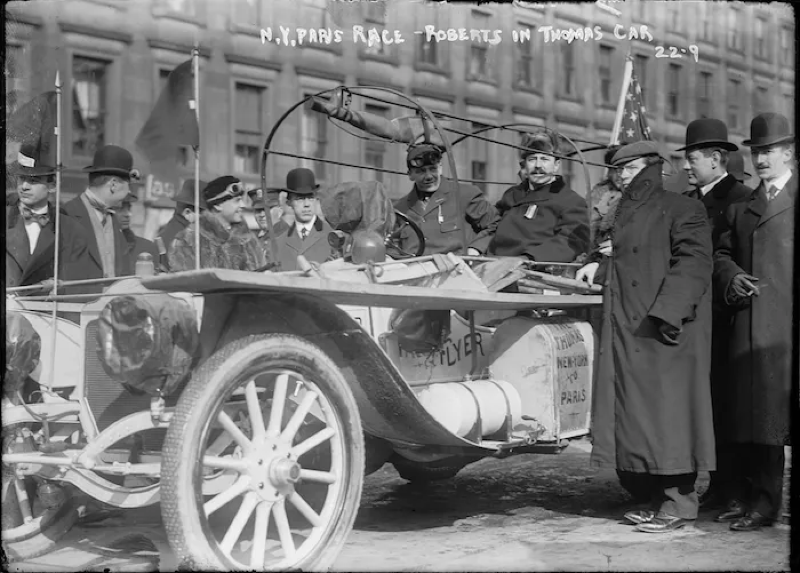
From Vicarious Travel: "In 1907, the Norwegian explorer Roald Amundsen, newly famous for traversing the Northwest Passage, sent a letter to the New York Times about an unusual debate unfolding in its pages. “An automobile race from New York to Paris by way of the Bering Straits is feasible,” he declared, “in spite of the tremendous difficulties that would be encountered.” He added that driving on sea ice “will probably be the most difficult stretch.” Even now, the notion of driving from New York to Paris sounds fantastical. Back then, few cars had crossed the continental United States. California didn’t yet have a gas station. Nevertheless, many in 1907 felt that an unassisted auto crossing of North America, Asia, and Europe, by way of Alaska, Siberia, and the sea ice between them, was doable, if difficult. And the Times published more items siding with the optimists than against. The whole of 1907 was a heady year for auto-enthusiasts."
A thundercloud that shows up almost every day in Australia is named Hector

From Wikipedia: "Hector is a cumulonimbus thundercloud cluster that forms regularly nearly every afternoon on the Tiwi Islands in the Northern Territory of Australia, from approximately September to March each year. Hector, or sometimes Hector the Convector, is known as one of the world's most consistently large thunderstorms; specifically, a small mesoscale convective system (MCS) or large multicellular thunderstorm. It reaches heights of approximately 20 kilometres (66,000 ft). Named by pilots during the Second World War, the recurring position of the thunderstorm made it a navigational beacon for pilots and mariners in the region. Hector is caused primarily by a collision of several sea breeze boundaries across the Tiwi Islands and is known for its consistency and intensity. The consistency of the phenomenon is caused by frequently occurring atmospheric conditions due to the sea and due to topography, and the underlying atmospheric environment constitutes a distinct microclimate."
What your dinner might look like in South Korea

Acknowledgements: I find a lot of these links myself, but I also get some from other newsletters that I rely on as "serendipity engines," such as The Morning News from Rosecrans Baldwin and Andrew Womack, Jodi Ettenberg's Curious About Everything, Dan Lewis's Now I Know, Robert Cottrell and Caroline Crampton's The Browser, Clive Thompson's Linkfest, Noah Brier and Colin Nagy's Why Is This Interesting, Maria Popova's The Marginalian, Sheehan Quirke AKA The Cultural Tutor, the Smithsonian magazine, and JSTOR Daily. If you come across something interesting that you think should be included here, please feel free to email me at mathew @ mathewingram dot com
